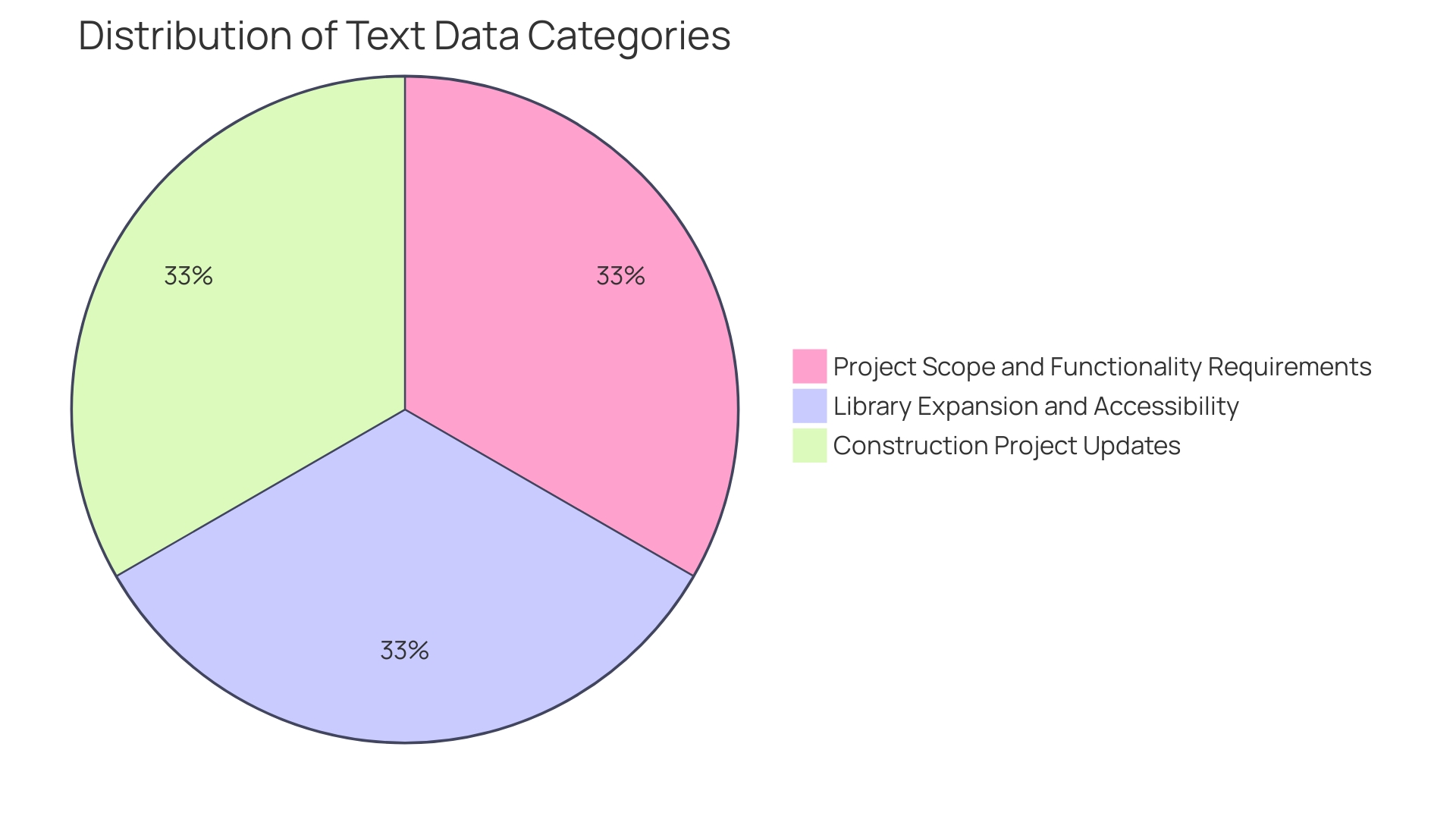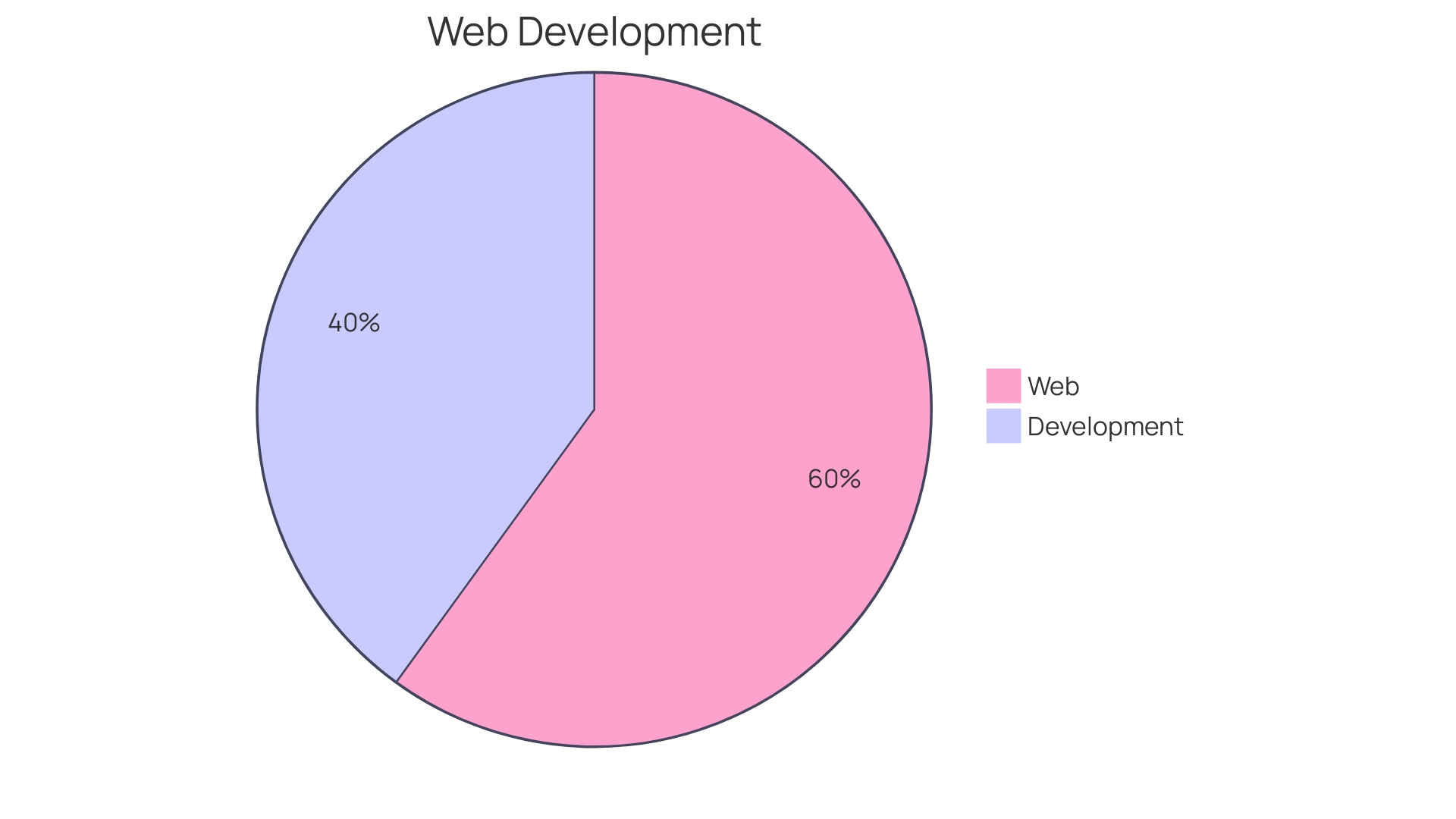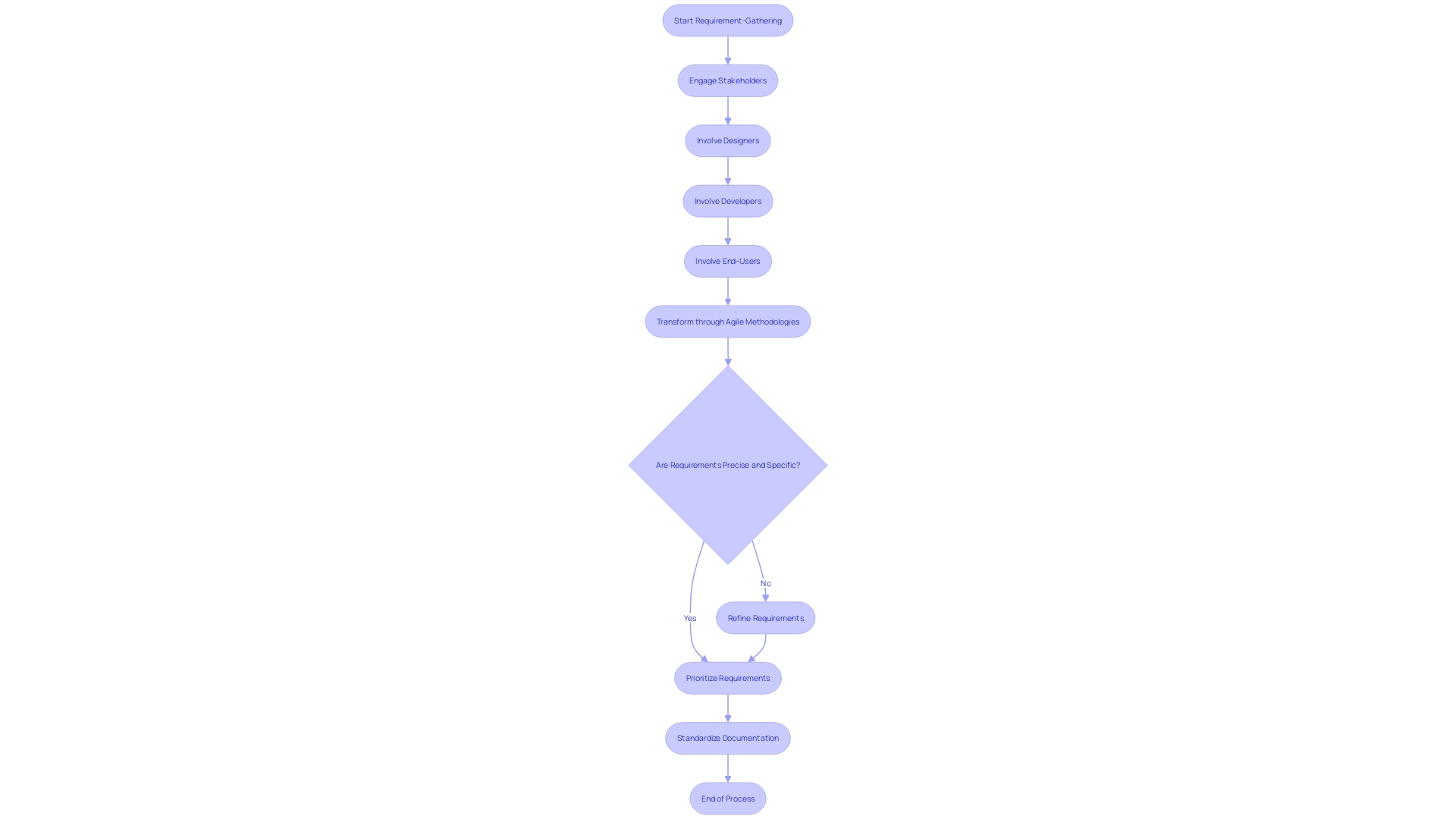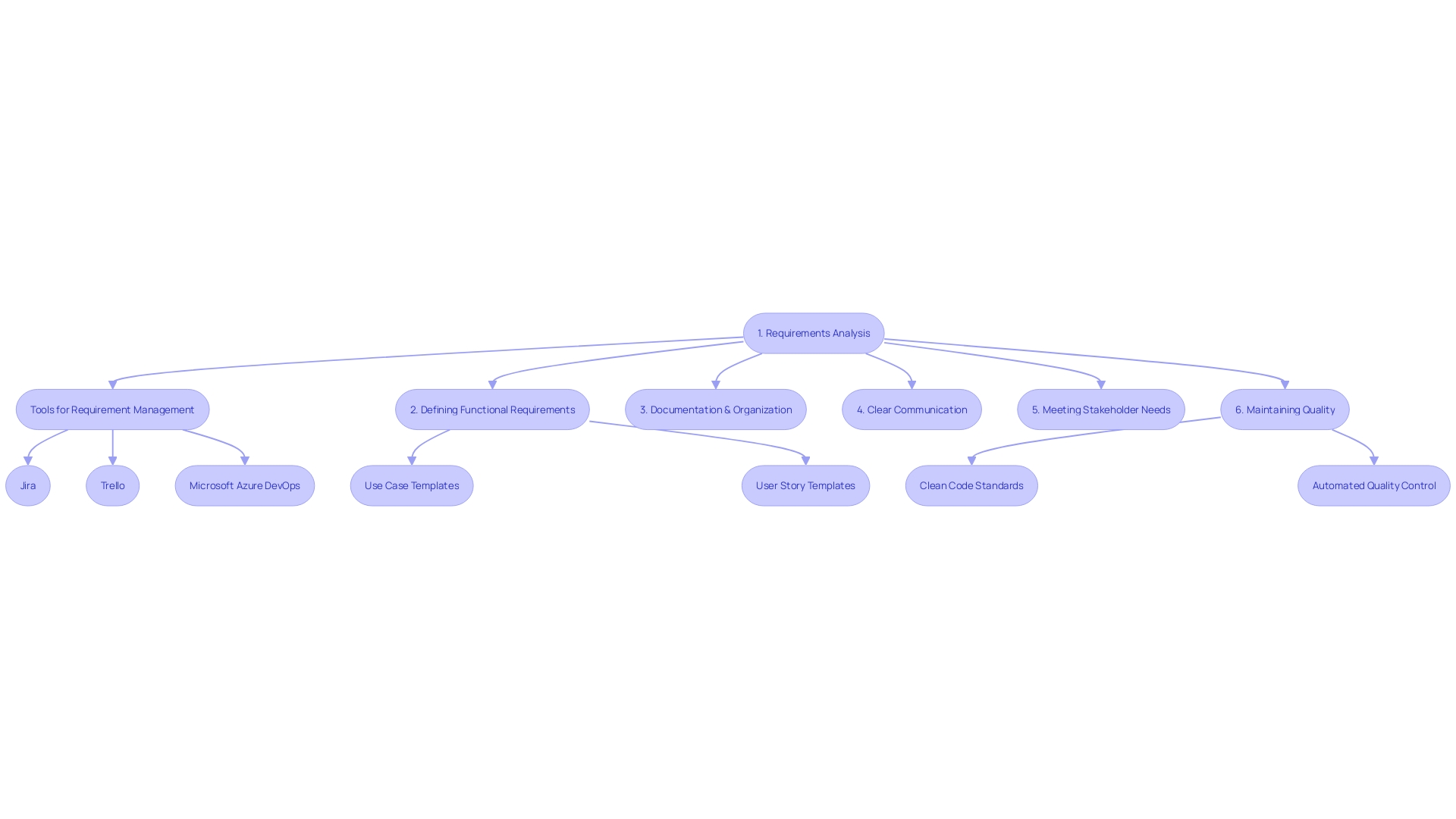Introduction
Functional requirements are the backbone of any website, defining the array of features and actions that users can perform. These requirements shape the user's overall experience on the website, from account creation to navigating through search systems. However, it's important to distinguish between features and functions, as features enable the execution of various functions.
On the other hand, non-functional requirements detail the standards for how the site should operate, including performance, security, usability, and scalability. These aspects contribute to the overall user experience and the website's quality and reliability.
In this article, we will explore the definitions of functional and non-functional requirements, provide examples of each, discuss their key differences, and highlight their importance in website development. We will also discuss best practices for writing requirements and introduce tools and templates for managing them. By understanding and prioritizing both types of requirements, businesses can create websites that meet user expectations, excel in performance, and drive success in the digital marketplace.
Join us as we delve into the world of functional and non-functional requirements and discover how they shape the websites we interact with every day.
Definition of Functional Requirements
Functional requirements are the backbone of any website, defining the array of features and actions that users can perform. At the heart of these requirements is the user's ability to interact with the site's services, such as account creation, logging in, utilizing a shopping cart on e-commerce platforms, and navigating through a robust search system. These functionalities not only cater to the user's immediate needs but also shape their overall experience on the website.
For instance, consider the design nuances of Armur, a portfolio website for the film industry. It encapsulates a person's unique vision and creativity, while simultaneously embedding a functional framework that supports repeated patterns across its pages. Indeed, a successful website is an interplay between personal expression and systematic functionality.
On a larger scale, organizations like the Ford Foundation have recognized the need to evolve their websites to better serve their audience's needs, acknowledging that a well-crafted website is paramount in supporting social change. They've addressed this by enhancing their content management system to handle a growing volume of content, which was a crucial functional update.
Reflecting on modern web design trends, the emphasis is on creating responsive and user-centered designs that adapt to various devices. This approach ensures that users enjoy a seamless and consistent experience, whether they're on a desktop or a mobile device. Statistics underline the importance of mobile-friendly designs, with over half of website traffic stemming from mobile users and a clear preference for sites that prioritize performance over aesthetics.
Furthermore, emerging technologies such as Progressive Web Apps (PWAs) are revolutionizing the landscape, offering app-like experiences on web platforms. These apps load quickly, even offline, and can be installed directly on a user's device, marrying the benefits of web and mobile applications.
In the realm of web design, it's crucial to distinguish between features and functions. A feature is a system that enables the execution of various functions, facilitating the user's interaction with the website. For example, a user management feature encompasses functions like adding users, managing permissions, and password administration.
Ultimately, every functional requirement stems from a real-world problem that the website aims to solve, making it imperative to define these requirements clearly, as they are essential for the acceptance of the product by its users. As web designers and e-commerce directors navigate the complexities of website creation and management, the focus must remain steadfast on delivering an intuitive and functional user experience that aligns with the evolving digital landscape.
Examples of Functional Requirements
Understanding functional and non-functional requirements is crucial for a website's success. For instance, user registration is a functional requirement, mandating a form for account creation with name, email, and password. Similarly, shopping cart functionality is indispensable for e-commerce websites, allowing users to add products, review their cart, and proceed to checkout.
Additionally, a robust search feature enables users to locate specific content or products with ease.
Illustrating the significance of functional design, let's take a page from Artemii Lebedev’s project, Armur, a portfolio website crafted for the film industry. This site embodies the creator’s personality and vision, merging emotional resonance with functional patterns repeatable across different pages. Such design considerations are pivotal for portfolio websites, which serve as personal narratives and professional showcases.
Accessibility also plays a vital role in web design, ensuring that a website is usable by people with various abilities. The Web Content Accessibility Guidelines (WCAG) outline principles to make web content perceivable, operable, understandable, and robust. Adhering to these guidelines not only benefits individuals with disabilities but also enhances the overall user experience.
In the realm of software development, the importance of clearly defined requirements cannot be overstated. The modern software development process, from analysis to deployment, hinges on a thorough understanding of user and stakeholder needs. Consequently, any ambiguity in requirements can lead to unsatisfactory outcomes and additional costs for rectification.
Reflecting on the Web's 35th anniversary, we're reminded of its profound impact on daily life. As the Web continues to evolve, addressing the concentration of power and the personal data market becomes increasingly urgent. These considerations are especially relevant for e-commerce directors who are steering their platforms through the competitive digital landscape.
Lastly, statistical insights reveal that a staggering 43% of small businesses plan to enhance their website performance in 2023. With over 1.11 billion websites existing and only a fraction actively maintained, a commitment to website functionality and user experience is more important than ever to stand out in the crowded digital space.

Definition of Non-Functional Requirements
Functional requirements specify the actions a website must be able to perform, while non-functional requirements detail the standards for how the site should operate, encompassing performance, security, usability, and scalability. For instance, when Alexandra Murgu collaborated with Artemii Lebedev's team on Armur, a portfolio site for the film industry, the goal was not only to reflect her personal vision but also to ensure the site was built on replicable patterns that enhance functionality. Similarly, the Ford Foundation faced a challenge with its website not meeting the evolving needs of its audience due to an outdated content management system that could not keep up with increased content publishing demands.
Non-functional requirements are vital as they uphold the integrity of the site's performance and user experience, which are key to sustained engagement. Research highlights that nearly 43% of web pages can function without JavaScript dependency, indicating that users value content accessibility over complex features. Furthermore, a study points out that over 67% of web pages must ensure that content in the main section is accessible for a satisfactory user experience.
These insights underscore the significance of balancing both functional and non-functional aspects to cater to user needs effectively.
Types of Non-Functional Requirements
In the realm of website design and development, non-functional requirements play a pivotal role in ensuring that a site not only meets artistic standards but also performs optimally. Performance requirements, for instance, are not just about the speed of a website, but also its responsiveness and stability under varying traffic conditions. Security requirements are equally crucial, as they protect sensitive user data and secure transactions, a fundamental aspect in an era where 43% of small businesses are investing in website performance, highlighting the importance of safeguarding digital assets.
Usability requirements go beyond mere aesthetics; they are about creating an intuitive experience that resonates with users, much like the creative storytelling found in portfolio websites like Alexandra Murgu’s Armor, designed to evoke emotion while maintaining a functional system. Scalability and reliability are about future-proofing, ensuring the website can cope with increasing demands without faltering. It's a concept underscored by the recent IPO of Arm Holdings, which at a valuation of $55 billion, exemplifies the significance of building scalable and reliable digital systems.
Moreover, the Ford Foundation's struggle with a website that could not keep pace with their content output demands illustrates the dire consequences of neglecting these non-functional requirements. As they pivoted from a handful of content pieces a month to several a week, their outdated CMS could not accommodate the growth, a clear testament to the importance of scalability and adaptability in web infrastructure.
In this digital age, where an astounding 82% of websites are inactive despite 252,000 new ones popping up daily, it's clear that a well-structured, accessible, and reliable website is more than a luxury—it's a necessity for standing out in a crowded online space. With the Web Content Accessibility Guidelines (WCAG) 2.1 offering a comprehensive framework for enhancing accessibility, adhering to these non-functional requirements is not just about compliance but also about extending the reach to a broader audience, including those with disabilities.
Ultimately, the success of a website hinges on a delicate balance between form and function, where each non-functional requirement is a cog in a larger machine. A machine designed to deliver not just a website, but an experience that is accessible, reliable, and poised for growth in an ever-evolving digital landscape.
Examples of Non-Functional Requirements
Understanding functional and non-functional website requirements is crucial for a seamless online operation. For instance, performance is a key non-functional requirement. A site should not only be responsive but also capable of loading within a snap, say 3 seconds, even when experiencing heavy traffic.
Meanwhile, security measures like SSL encryption are non-negotiable to protect user data and ensure safe transactions.
Usability is another aspect that demands attention; a website should boast clear navigation and an intuitive interface to provide an exceptional user experience. Consider how the scalability of a site is pivotal—it must effortlessly manage a surge in traffic, say a 50% increase, without compromising its performance. Lastly, reliability encompasses having robust backup and disaster recovery strategies to promptly address any server failures and minimize downtime.
These requirements are not just theoretical; they're grounded in real-world scenarios. For instance, the Ford Foundation revamped its online presence to better serve its mission, ensuring its website could handle the increased content output and diverse user needs. Furthermore, the implementation of performance monitoring tools like Sentry can offer valuable insights into real user interactions, which can be pivotal in optimizing the Time to First Byte (TTFB) and overall user experience.
In the dynamic landscape of e-commerce, where consumer expectations constantly evolve, and companies like Arm Holdings make headlines with multi-billion-dollar IPOs, the stakes are high. Businesses must prioritize these non-functional requirements to stay competitive and meet customer demands.
Key Differences Between Functional and Non-Functional Requirements
Distinguishing between functional and non-functional requirements is essential in website development. Functional requirements define the specific behaviors or functions of a website, such as the ability to process a payment or create a user profile. These are explicit tasks the site must be able to perform and are directly tied to user actions.
For example, in the creation of Armor, a portfolio website for the film industry, the functional aspect involved setting up patterns and systems that could be consistently replicated across various pages to showcase creative work effectively.
In contrast, non-functional requirements address the website's operational aspects, including performance, security, and scalability. These aspects contribute to the overall user experience but do not relate directly to specific functions. For instance, a user may never see the code ensuring their data is securely transmitted, but this non-functional requirement is critical to their trust in the site.
Measuring functional requirements is typically more straightforward, as you can test whether a function works as intended. However, assessing non-functional requirements often involves subjective analysis to determine if the website's performance meets users' expectations. An example is the UX/UI design considerations for an online vegetable and fruit selling application, which, while not directly impacting functionality, are crucial to ensuring user satisfaction with their overall experience on the platform.
Both types of requirements are vital for a successful website. A well-defined set of functional requirements ensures that essential tasks can be performed, while robust non-functional requirements guarantee the site's quality and reliability, as seen in the smooth server setup for Laravel apps with tools like Larasail.
Importance of Both Types of Requirements
Understanding both functional and non-functional requirements is crucial for the development of a website that not only meets user expectations but excels in performance and quality. Functional requirements detail what the website must do, encompassing features like user management systems that include adding and managing users, along with password management. These specifications are vital for user satisfaction as they directly impact the experience and capabilities that users interact with daily.
Conversely, non-functional requirements address the website's performance, dictating how the system operates under various conditions. These include aspects like load times, which can be critical for user retention; statistics show that 61% of users will leave a site if it doesn’t load quickly enough, highlighting the importance of optimizing for speed.
Quality assurance benefits from clear definitions of both requirement types, as they serve as benchmarks for testing. A website's ability to function correctly, supported by functional testing, isn’t just about ticking off a checklist—it's about delivering a seamless experience. For instance, users are more inclined to revisit a mobile-friendly site, with a 74% likelihood of returning due to ease of use.
Furthermore, aligning a website's capabilities with business objectives is essential. While functional requirements ensure that specific tasks can be carried out, non-functional requirements uphold the integrity of the website's broader business context, such as maintaining high security and offering scalability to accommodate growth. In a world where over half of all website traffic comes from mobile devices, it's evident that a website must perform well across all platforms to meet both functional and non-functional standards.
Lastly, the strategic investment in website performance is not lost on businesses, with 43% of small businesses planning to focus on enhancing their website’s performance. This trend underscores the necessity for a robust online platform that operates efficiently and fulfills both functional and non-functional requirements, ultimately driving business success in the digital marketplace.

Best Practices for Writing Requirements
Engaging stakeholders, including designers, developers, and end-users, in the requirement-gathering process fosters a comprehensive understanding of both the explicit needs and the implicit expectations. This holistic approach was reflected in the transformation of TBC Bank, which embraced agile methodologies to simplify operations and enhance digital product delivery, ultimately aiming to elevate customer and employee satisfaction.
To avoid the pitfalls of ambiguity, requirements must be articulated with precision and specificity. They should be SMART—specific, measurable, attainable, relevant, and time-bound. This clarity in definition is vital, as demonstrated by AT&T's historical challenges, where accumulated systems and policies became impediments to efficiency.
Prioritizing requirements is essential for aligning them with strategic business goals and enhancing the website's functionality and user experience. This process of prioritization can draw from the insights of Somerset Academies of Texas, where the integration of disparate software systems into a cohesive technology solution was crucial for streamlining operations.
Lastly, the standardized documentation of requirements, whether as user stories or use cases, is imperative to ensure mutual understanding and effective communication among all parties involved. Such documentation not only guides development but also serves as a reference to maintain alignment with the initial goals and objectives of the project.

Tools and Templates for Managing Requirements
To navigate the intricacies of website development, several tools and methodologies prove indispensable in managing both functional and non-functional requirements. For instance, Requirement Management Tools, such as Jira, Trello, and Microsoft Azure DevOps, streamline the documentation, organization, and tracking of requirements throughout a project's lifecycle. These tools play a pivotal role in ensuring project teams maintain a comprehensive grasp of stakeholder needs and expectations, as well as fostering clear communication.
In the realm of defining functional requirements, Use Case Templates are invaluable. They provide a systematic framework to delineate actors, scenarios, and desired outcomes, ensuring a project's functionality aligns with user expectations and business objectives. Similarly, User Story Templates are instrumental in capturing functional requirements from the user's perspective by articulating the user's goals, actions, and anticipated results.
The importance of these tools and templates cannot be overstated, as the cost of introducing software with deficiencies can be substantial. For example, M&T Bank's initiative to establish Clean Code standards across its organization underscores the critical nature of maintaining the quality and compliance of software. Quality attributes such as functionality, reliability, usability, and efficiency are essential to the success of any software project, as they collectively contribute to performance and user satisfaction.
Furthermore, as technology evolves, the software development industry is witnessing a surge in automated quality control. The forthcoming emphasis on understanding the provenance of code, alongside its composition, necessitates meticulous documentation and tracking of requirements. This foresight is essential for rapid and effective issue remediation, as illustrated by the need for comprehensive insights into the prevalence of vulnerabilities like log4j.
In light of these advancing trends, the strategic use of Requirement Management Tools, Use Case Templates, and User Story Templates positions development teams to meet the highest standards of quality and security, ensuring the successful deployment of software that meets the evolving demands of today's digital landscape.

Common Pitfalls in Requirements Management
When managing the development process for e-commerce websites, it's crucial to navigate around common issues that can derail your project. Here are essential pitfalls to avoid:
-
Ambiguity can be a project's worst enemy. Clear, unambiguous requirements are the blueprint for your website's success. Consider how a lack of decision-making led to an unexpected federal holiday and reports that went unchecked; similarly, unclear requirements can result in delays and confusion.
-
Over-engineering is the art of implementing more than necessary. Like adding extra bells and whistles to software that users never asked for, it's important to focus on what truly matters to your customers and aligns with your business goals.
-
Poor communication can fragment a team and derail a project. The importance of cohesive teamwork cannot be overstated—as demonstrated by the QA team owning defect tickets post-release, regular and clear communication ensures that everyone, from developers to stakeholders, is on the same wavelength.
-
Lack of testing is akin to navigating a ship without a compass. Functional testing validates that the user interface and other aspects of the software perform as intended, ensuring the end product meets both business and customer expectations.
Avoiding these pitfalls demands a nuanced understanding of both the software development lifecycle and your e-commerce platform's unique requirements. This includes the implementation of best practices in access management, highlighted by Salesforce's principle of least privilege, and staying informed on the latest industry recognitions like the w3 Awards, which honor best practices in web features and redesigns.
Conclusion
Understanding and prioritizing both functional and non-functional requirements is crucial for creating successful websites. Functional requirements define the specific behaviors and functions that users can perform, while non-functional requirements address the website's operational aspects like performance, security, usability, and scalability.
By defining clear and unambiguous requirements, businesses can ensure that essential tasks are performed and the website meets user expectations. Prioritizing requirements, engaging stakeholders, and using tools and templates for requirements management are best practices that enhance functionality and user experience.
However, there are common pitfalls to avoid, such as ambiguity, over-engineering, poor communication, and lack of testing. Clear requirements, focusing on what truly matters, fostering teamwork, and conducting thorough testing are essential for project success.
In conclusion, a website's success lies in understanding and balancing both functional and non-functional requirements. By following best practices and avoiding common pitfalls, businesses can create websites that meet user expectations, excel in performance, and drive success in the digital marketplace. As industry experts, it is our responsibility to emphasize the importance of requirements management and guide businesses in creating websites that align with the evolving digital landscape.





